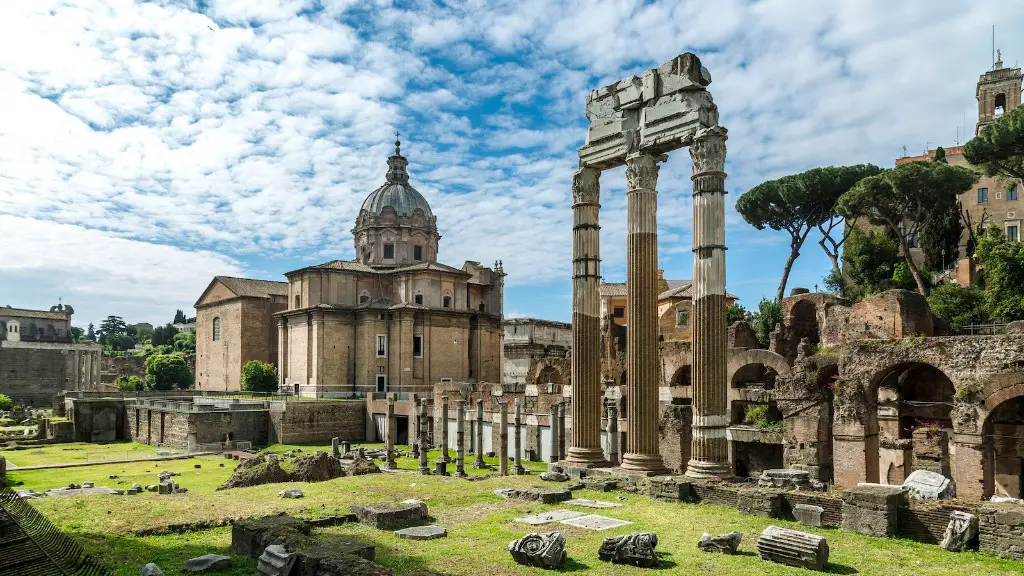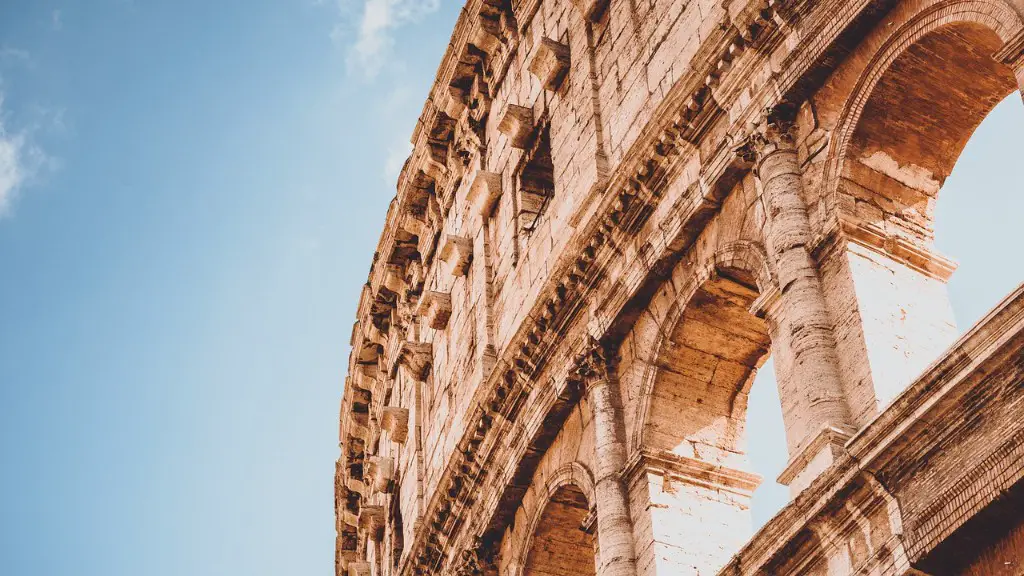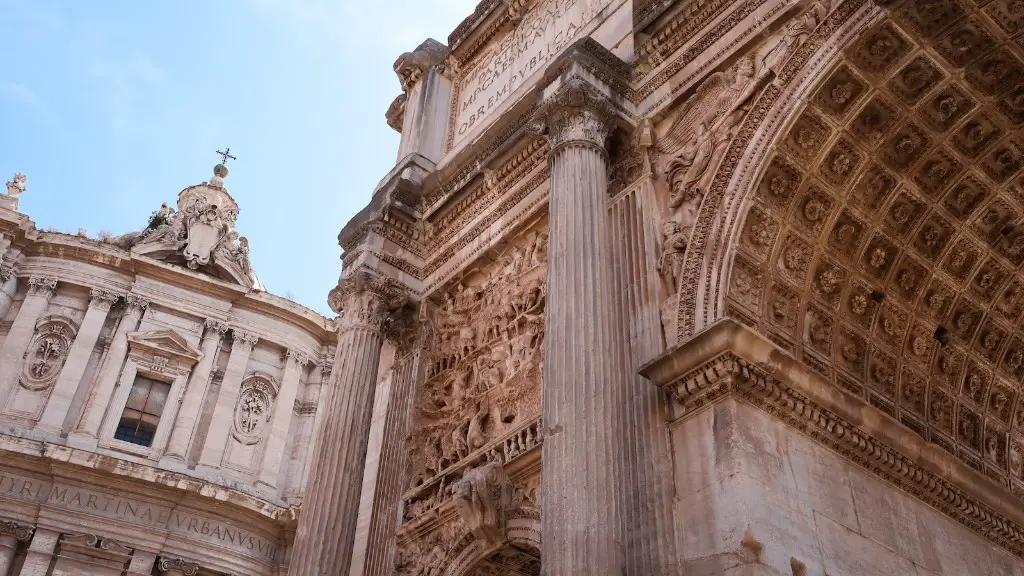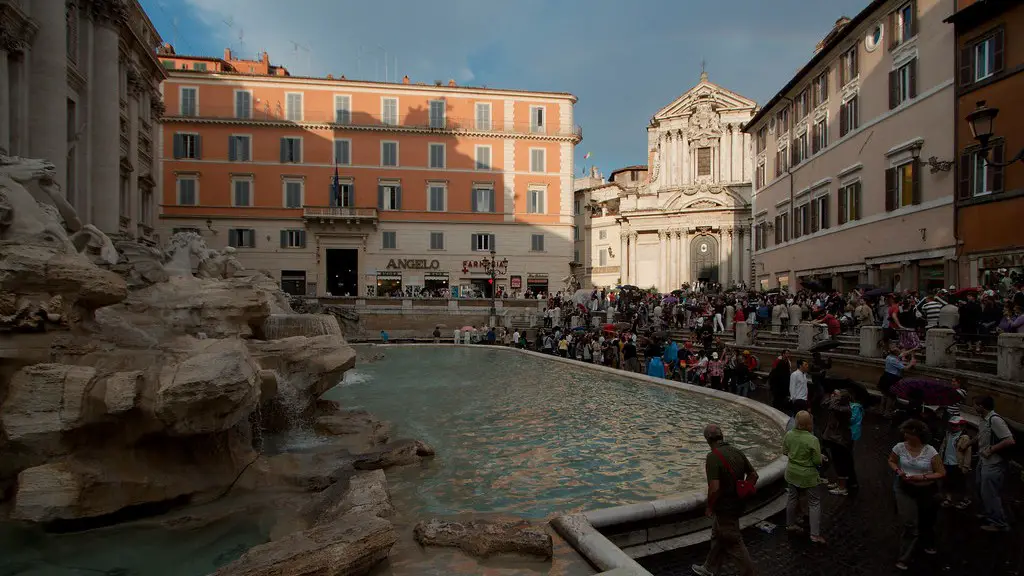Oils were an iconic element of daily life in ancient Rome. They were used for everything from beautifying the skin to healing wounds and preparing food. In particular, different types of oils were used for bathing in the Roman baths and were an integral part of the bathing ritual for the Romans. Several kinds of oils were favored including olive oil, almond oil, and castor oil and each had its own special properties.
The Romans believed in the importance of hygiene, and bathing was an essential part of maintaining good health. Ancient Rome had an extensive network of baths, which were built throughout the city and others which were scattered outside the city. Roman baths were popular gathering places where men, women and children all washed themselves with the oils.
The most common oil used in baths was olive oil. This oil had several beneficial effects on the skin such as nourishing and softening it. Olive oil is packed with essential vitamins and minerals which help to replenish the skin and keep it healthy. It was widely used by the Romans and was considered to be a source of healing.
Almond oil was also used to soften and moisturize the skin. It was popularly used to soothe and nourish the skin. Almond oil is rich in vitamin E and other essential vitamins, minerals and fatty acids, making it an ideal choice for moisturizing the skin.
Castor oil was a less common oil used in bathing, but it was still used. This oil was used for its antiseptic and healing properties. It was also used to help soothe and nourish the skin.
Roman baths were not just used for washing and bathing, but were also places of relaxation and socializing. People would gather in the baths to discuss news, politics and other topics. In many of these baths, there would be masseurs on hand to massage guests with the different oils to help them relax.
In addition to using the oils in the baths, the ancient Romans also used them in a variety of other ways. The oils were used in cooking, scenting the home, as a perfume, and even in religious rituals. Oils were so much a part of daily life that it is almost impossible to imagine the Romans without them.
Other Uses of Oils in Ancient Rome
Oils were not just used for bathing in Ancient Rome. They were an integral part of daily life and used for a variety of purposes. For example, they were used in many spiritual and religious rituals that were popular in the Roman religion. Olive oil was often used to anoint people in religious rituals and to bless objects. Almond oil was also used in rituals, as it was believed to have cleansing and purifying properties.
In addition to spiritual uses, oils were also used for medicinal purposes. The ancient Romans believed that olive oil had healing properties and could be used to treat a variety of ailments. It was often used to relieve pain, reduce inflammation, and even to soothe aching muscles. In fact, oil was used to treat everything from sore throats to skin complaints.
Oils were also used in cooking and to make various products. Olive oil was used to make sauces, pastes, and salad dressings. Almond oil was used to make breads, cakes, and even candies. Castor oil was used to make balms, ointments, and other beauty products.
Oils were even used as currency in some cases. Olive oil was used as a form of currency in Ancient Rome and it had a distinct monetary value. This was especially common in the poorer sections of the city, where it was used to purchase goods and services.
Benefits of Oils in Ancient Rome
The oils used in Ancient Rome had many benefits that made them essential to daily life. Olive oil was believed to have healing properties that could treat a variety of ailments. Almond oil was thought to be nourishing and moisturizing for the skin. Castor oil was believed to be antiseptic and to promote healing.
In addition to the medicinal benefits, oils were also used for practical purposes. Olive oil was used to make candle and fuel for lamps, to improve the taste of food, and to clean clothes. Almond oil was used for baking, for beauty treatments, and for massage. Castor oil was used for lubrication and to help with muscle pain.
Oils were a popular and integral part of daily life in ancient Rome. People used them for medicinal and practical purposes and they even had a monetary value. They were essential to the Roman baths and used in a variety of rituals and ceremonies. Oils contributed to the health, wellbeing and culture of Ancient Rome.
Accessibility of Oils in Ancient Rome
Oils were widely available in Ancient Rome and could be purchased easily by most people. The oils were grown locally and could be found in the local markets, as well as in other stores. Olive oil was especially popular and there were several kinds to choose from depending on the quality, including pure olive oil, olive oil mixed with other oils, and infusions of herbs and spices.
Oils were not only accessible to the rich, but were also affordable for the poorer classes as well. Olive oil, for example, could be purchased in small quantities for just a few coins. This allowed people who lived on a tight budget to enjoy the benefits of oils without having to spend a fortune.
In addition to being accessible, oils were also plentiful in Ancient Rome. This meant that there was enough for everyone and that it was easy to obtain different types of oils at any given time. Almond, olive and castor oils were all widely available and could be used for a variety of purposes.
Oils played an important role in ancient Roman society. They were easily accessible and affordable, and could be used for medicinal, practical, spiritual, and even monetary purposes. Despite the passage of time, the importance of oils to Ancient Rome is still remembered today.
Production Process of Oils
The production process of oils in Ancient Rome was a laborious task. Olive oil was the most popular oil used, and it was made by pressing olives in large stone presses. The olives were first ground into a paste, which was then placed in special bags and put into the press. As much pressure was applied as possible to extract the oil from the olives.
The process of making almond oil was similar, but instead of olives, a paste made from almonds was used. It was also pressed in a stone press and the oil was extracted. Both olive and almond oil were then strained and stored in special vessels for later use.
Castor oil was not as common as olive and almond oil, but it was still produced in Ancient Rome. This oil was made by pressing castor seeds using a simple machine called a “presser”. The presser was often made of wood and had a large basin that held the seeds. After the seeds were pressed, the oil was collected and strained.
Oils were an important part of Ancient Roman life and their production process was vital to the culture. Ancient Roman methods of oil production were labor-intensive and often time-consuming, but the oils produced were essential to the daily life of the people.
Modern Uses of Ancient Roman Oils
The oils used in Ancient Rome are still used today, though in different forms. In many parts of the world, olive oil is the most popular oil used in cooking, baking, and even as a beauty product. Almond oil is widely used as a skin moisturizer and can also be used as a carrier oil in essential oil preparations.
Castor oil is used in many industrial applications such as lubricants and even in the production of plastics. It can also be used as a muscle relaxant and for a variety of skin treatments. In some places, it is still used as a natural remedy for everything from headaches to constipation.
Although the oils used in Ancient Rome have changed over time, their basic composition remains the same. Oils are still a fundamental part of modern life and are just as important as they were in Ancient Rome. They are used for everything from cooking to beautifying the skin, and their long history highlights their practical and medicinal benefits.





